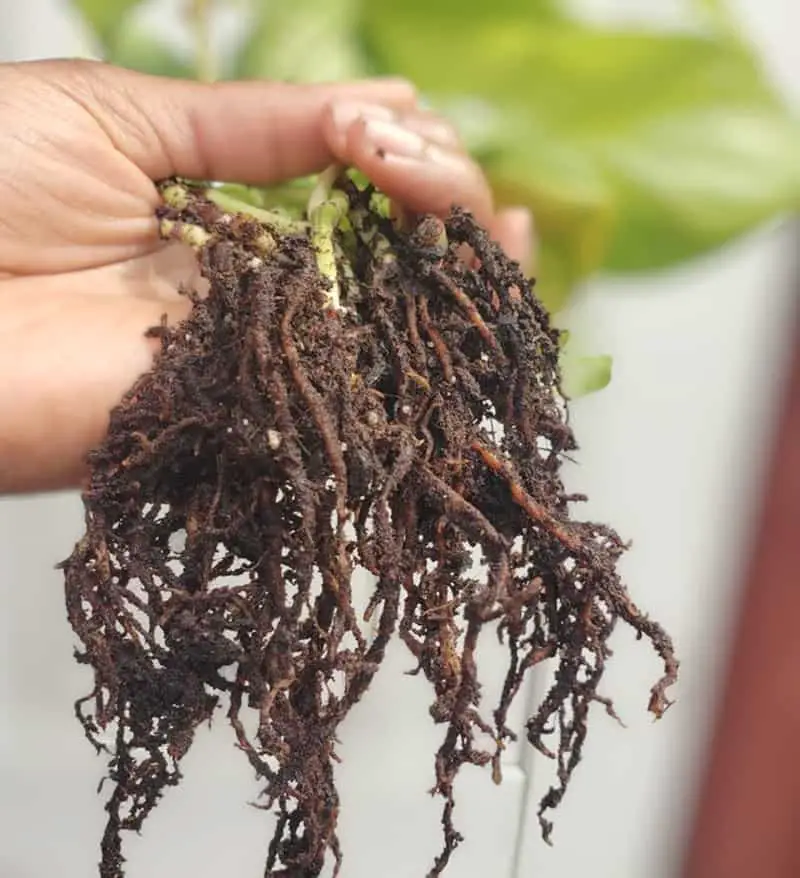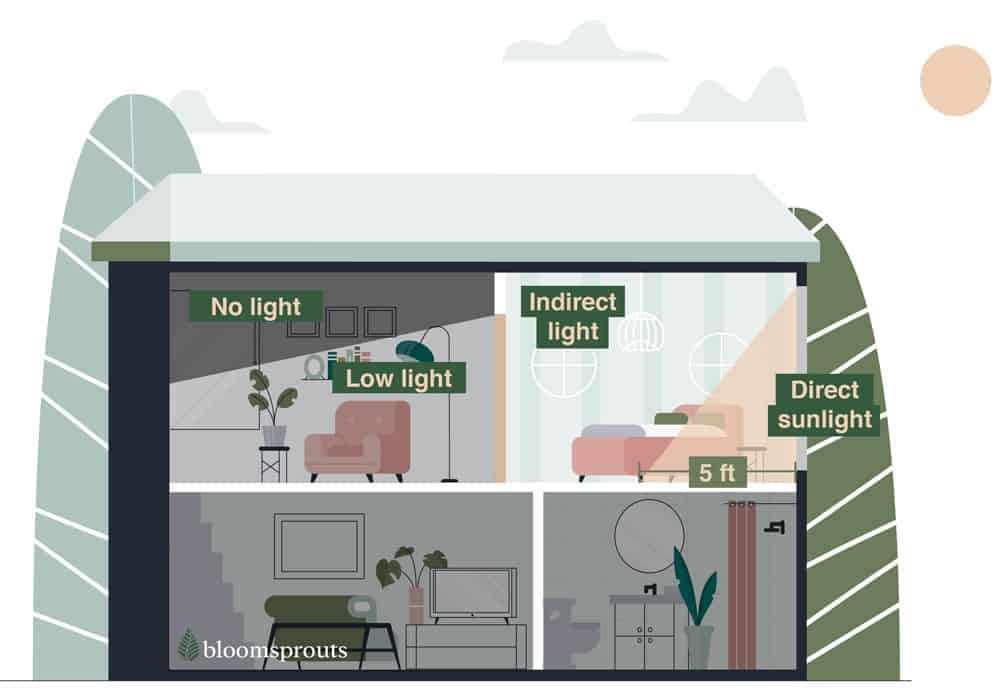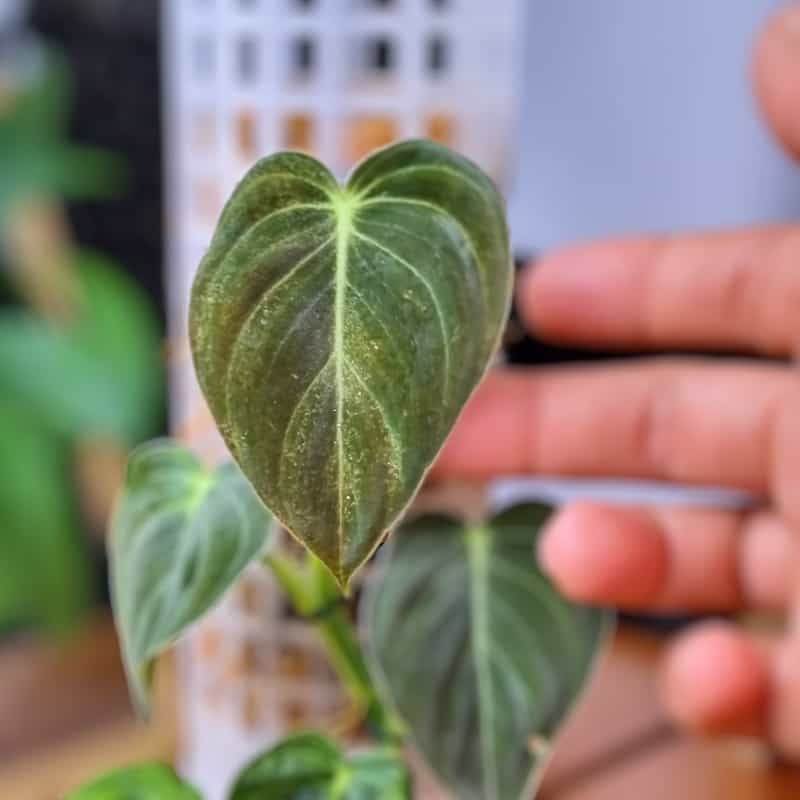
Like with most plants, the most visible sign that something is wrong with your philodendron is when the leaves show signs of discoloration.
The yellow leaves on your philodendron could be a result of its normal life cycle, or it could indicate that something is wrong. Watering issues, light conditions, fertilization, temperature, and humidity concerns can all cause yellow leaves on philodendrons.
Now, in this article not only will we discuss the reasons for your philodendron’s yellow leaves, but we’ll also provide solutions so that you can get your plant back to good health!
Here are some of the most common reasons for yellow leaves on philodendrons:
- Root Rot From Overwatering
- Incorrect Light Conditions
- Underwatering / Dehydration
- Pest Infestation
- Nutrients Deficiency
- Temperature Stress
- Ordinary Yellowing: Old Foliage
Let’s get started!
Bloomsprouts may earn an affiliate commission if you purchase something through recommended links.
1. Root Rot From Overwatering
Root rot is probably the most common reason for yellow leaves on philodendrons. Depending on the severity, yellow leaves from root rot can progress to brown leaves, and eventually, the death of your plant.
When your philodendron is overwatered, the roots become waterlogged and can’t absorb the oxygen they need to survive. This leads to root rot, which then causes the leaves to yellow and eventually dies.

Causes of Overwatering
Overwatering is not always caused by watering your plant too frequently. Sometimes, the problem can be with the potting mix or the pot you’re using.
Let’s discuss each of these in more detail.
Potting Soil Too Compact
Like a lot of tropical plants, philodendron likes airy and well-draining soil.
When potting soil is compacted, it doesn’t allow water to drain properly, which can lead to overwatering, even if you’re not watering your plant too frequently.

The waterlogged soil is an ideal environment for anaerobic bacteria and fungi to thrive, which can then cause root rot.
To avoid this issue, make sure to use a potting mix that’s designed for philodendrons or other tropical plants. Alternatively, you can add some perlite or pumice to your potting mix to improve drainage.
Oversized Pot
When you keep your plants in pots that are too large, the roots will not be able to reach all sides.
As you water the pot, the area that is not reached by the roots will stay wet for a longer period. This area becomes ideal for bacteria and fungi to grow, which can lead to root rot.
To avoid this, make sure the pot you’re using is not too large for your plant.
If you need to repot your philodendron, choose a pot that’s only one or two inches wider than the diameter of your plant’s root mass
Pot With No Drainage
If you’re using a pot that doesn’t have drainage holes, your plant is also likely to suffer from overwatering.
When you water your plant in a pot without drainage holes, the water will sit at the bottom of the pot and not drain properly. The roots will become waterlogged, resulting in root rot.
To avoid this issue, make sure the pot you’re using has drainage holes. If not, you can drill some holes yourself.
Overwatering in Winter
In winter, most plants enter a state of dormancy due to the cold temperatures and reduction in daylight. During this time, photosynthesis slows down, and the water requirements of the philodendron also reduce.
Additionally, the cold weather means that water doesn’t evaporate from the soil as easily, so the potting soil stays wetter for longer in the colder months than it would in summer.
During the winter, the best thing to do is to water your philodendron thoroughly and make sure the water drains out. Then, wait till all the soil has dried out before watering again, which should take about two weeks.
You’ll need to water more at the beginning and end of winter. Still, as the weather gets colder, you’ll have to adjust the watering schedule to accommodate the changes in temperature and lighting conditions.
How To Treat Root Rot from Overwatering
Root rot isn’t easy for a plant to recover from, so if you suspect that your philodendron yellowing leaves are caused by root rot, you should take action immediately.
First, get your philodendron out of its original pot and shake out all the soil. Don’t bother keeping the potting soil because it’s too saturated to be reused.
Rinse out the roots so you can see them.
Healthy roots are typically white, off-white, or cream-colored. Keeping this in mind, look out for brown or black roots because those are affected by root rot.
Using a pair of sharp pruning shears or scissors, cut the browning or black roots away, going a little above the affected area.
Make clean cuts without sawing away at the roots, and clean the blades between uses with rubbing alcohol to ensure that you don’t introduce any pathogens into the cuts.
As far as possible, keep your cuts small and neat so your plant won’t have to spend too much energy healing them.
Then you need to repot your philodendron in a new, well-draining potting mix after you’ve cleaned out the pot and rubbed it down with a fungicide like a neem oil to prevent any infections.
2. Incorrect Light Conditions
Incorrect light conditions, including too much or too little light, can both cause yellowing leaves in plants.
Here are a few situations where the light quality causes philodendron yellowing leaves and what you can do about it.
Direct Sunlight Damage
Plants like philodendrons are native to tropical forests. They’re vines that grow underneath large trees, so their light needs include partial or dappled sunlight, the kind that filters through the trees.
Direct sunlight will cause sunburn and scorching on the plants, causing the leaves to turn yellow.
Bright sunlight leads to a breakdown of chlorophyll in the leaves, which manifests as bleaching, yellowing, or browning on the leaves.
Sun damage to your philodendron cannot be reversed, but you can ensure that your plant doesn’t suffer any further.
Prune the sun-damaged leaves away and ensure that the potting soil is moist but not wet.
Then, move your philodendron to a space where it can receive bright, indirect sunlight to prevent any further damage.

Outdoors, the best location would be under a tree, but you can also plant your philodendron under an awning or a similar cover.
If your plant is indoors and you don’t have any other windows that you can move your philodendron to, you can soften the light using a sheer curtain, reducing the intensity of light hitting your plant.
Low Light Conditions
Philodendrons need bright indirect sunlight to photosynthesize the sugars they need for nutrition.
When your plant receives insufficient sunlight, it becomes nutrient deficient, leading to yellowing leaves.
While the yellow leaves cannot become green again, you can prevent the rest of your leaves from yellowing by moving your plant to a location with bright indirect light.
If you keep your philodendron indoors and don’t have access to a bright window, you can purchase a grow light like the Frenan Grow Light with Stand, which mimics the light of the sun and helps your plant photosynthesize.
3. Under-watering
Water stress caused by underwatering is a pretty common reason for plants to droop and start yellowing.
Philodendrons love to be well watered, and while they don’t like soggy soil, they don’t tolerate dry conditions very well.
How Long Can Philodendron Go Without Water?
Philodendrons must be watered thoroughly and regularly.
A philodendron can go a maximum of three weeks without water in the summer since it typically needs to be watered once every 1-2 weeks. When the potting soil completely dries out, the philodendron will start wilting and die out pretty soon after.
Fixing Under-watered Philodendron
To fix under-watered philodendron, you should water your plant thoroughly at the base until excess water flows out of the drainage hole.
Then, place your plant in partial shade as it recovers, ensuring that it still receives about 6-8 hours of dappled sunlight every day.
Check the soil after about a week. If the top few inches of the soil are dry, your philodendron is ready to be watered again.
Your philodendron will recover, and no more leaves will wilt and yellow as long as you follow a watering schedule that keeps the potting soil moist but not wet.
4. Pests Infestation
Philodendrons typically don’t have a lot of pest infestations, especially indoors. However, a few pests can cause damage and yellowing of leaves.

Common Pests That Are Eating Philodendron Leaves
Common pests found on the philodendron include scale insects and mealybugs, both of which eat the leaves of the philodendron by sucking away at the sap, causing wilting and yellowing of the leaves.
Spider mites also eat the leaves, but their attacks cause visible yellow speckles wherever the mites have bitten into the leaf rather than an overall yellowing.
How To Treat and Prevent Pests Infestation
Pest infestations can result in philodendron yellowing leaves, an overall decline in health, and even the plant’s eventual death.
Check your plants regularly for infestations and treat the affected area with rubbing alcohol or fungicides like neem oil extract, preventing further infestation. It’s also important to prevent soggy soil because wet conditions encourage the development of larvae.
If you notice any larvae on the leaves or in the soil, pick them off one by one and wipe the plant and the pot down with neem oil extract.
5. Nutrient Deficiency (Chlorosis Conundrum)
Chlorosis Conundrum refers to abnormal yellowing leaves. This condition is not unique to the philodendron but can happen to any plant due to several causes including insufficient nutrition.
Different Nutrient Deficiencies
Lack of iron is the most common nutrient deficiency associated with Chlorosis Conundrum. Other deficiencies include nitrogen, zinc, and manganese. These nutrient deficiencies may be caused by many reasons, from root issues and soil compacting to poor soil quality.
How To Properly Feed Philodendron
Philodendrons prefer to be lightly fertilized, so the potting soil should be rich in organic matter.
If you find that your potting soil is deficient, you can use a good quality liquid fertilizer with a standard 20:20:20 ratio of the macronutrients, nitrogen, phosphorus, and potassium.
Any fertilizer you use should be slow-releasing so that it doesn’t burn your philodendron.
An iron deficiency can be addressed by looking for chelated iron in your fertilizer.
This fertilizer can be used once a month during the growing season, from spring through summer.
Through winter, the fertilizer should be diluted or avoided completely.
6. Temperature Stress
If you’ve considered all the other factors and can’t identify what’s causing your philodendron yellowing leaves, it’s likely temperature stress.
How High Temperature and Cold Winter Cause Yellowing Leaves
Very high, very low, and inconsistent temperatures caused by placing the plant next to a radiator in a cold room can cause philodendron yellowing leaves.
Heat makes it difficult for the plant to hold on to water, and cold weather can make photosynthesis difficult, leading to water and nutrient deficiency.
Also Read: Is it safe to water during heat stroke?
How To Avoid Temperature Stress
To avoid temperature stress, it’s best to find a spot for your philodendron where the temperature stays more or less consistent, and any changes are gradual, like changing seasons.
If you live in an area where the temperatures go very low, then you should bring your philodendrons in for the winter. The ideal place is an indoor location near a window that isn’t opened frequently.
It should also be away from any drafts and breezes that could hurt the plant in the winter.
7. Ordinary Yellowing: Old Foliage
If your plant is healthy and the yellowing leaves are near the bottom, then this yellowing is a regular part of the plant’s life cycle.
It’s perfectly normal for older leaves to yellow and die off and be replaced by newer leaves near the top.
Frequent Questions
Can Yellow Philodendron Leaves Turn Back Green?
Yellow philodendron leaves can’t become green again because they’ve already lost the chlorophyll that makes them green, and nothing can return it. The yellow leaves need to be pruned away, and the cause of yellowing should be addressed to ensure that the rest of the plant is not affected.
Should You Cut Yellow Leaves Off Philodendron?
You don’t have to cut off yellow leaves from your philodendron unless the leaves are infested with pests. The yellow leaves will fall off on their own. If you want to remove the leaves, you can, so your plant looks better, but you should wait until the leaf has turned fully yellow.

